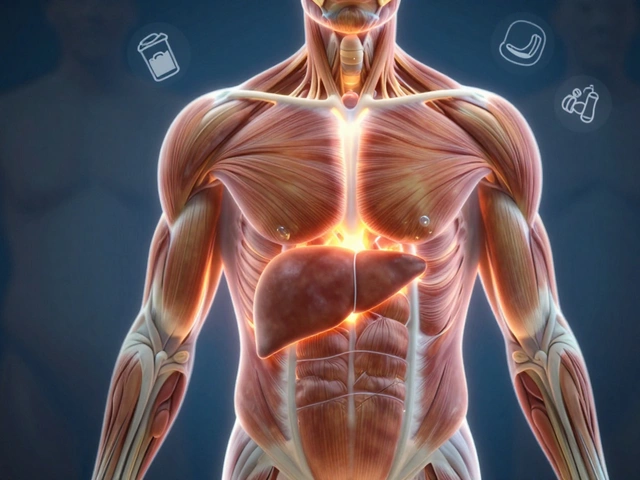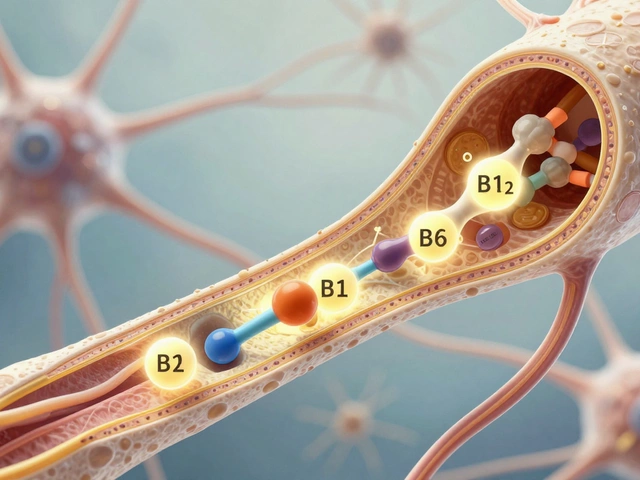Heard about the 30/30/30 method for losing fat? You’re not alone—this approach is popping up in gyms, clinics, and social media feeds for a reason. People want something easy to remember and simple to follow, and this method keeps things straightforward. No complex tracking or crazy restrictions. Just three rules: eat 30 grams of protein within 30 minutes of waking up, then get in at least 30 minutes of movement before noon.
Why all these thirties? It’s actually rooted in science, not just catchy marketing. By loading your body up with protein early, you start off with energy and keep hunger in check. Pair that with a short, brisk workout and you’re already ticking two fat-loss boxes for the day before lunchtime. You don’t need fancy supplements or exotic ingredients—eggs, Greek yogurt, and a walk outside can get the job done.
- What is the 30/30/30 Method?
- The Science Behind the Numbers
- How to Actually Use It Every Day
- Biggest Benefits and Surprising Results
- Real-Life Tips from Weight Loss Clinics
What is the 30/30/30 Method?
The 30/30/30 method is a straightforward fat loss routine that’s tough to mess up. Here’s how it breaks down: you eat 30 grams of protein within 30 minutes of waking up, and then you move your body for at least 30 minutes before noon. There’s nothing fancy or mysterious about it, which is why so many people keep coming back to it—especially those who don’t want to fuss with strict meal plans or weird schedules.
This isn’t some random trend. The number “30” isn’t pulled out of thin air. Thirty grams of protein in the morning is known to curb hunger, boost your metabolism, and get your day started with a steady flow of energy. Most people find that when they start with a high-protein breakfast, they don’t snack on junk food as much throughout the day. Add in 30 minutes of physical activity, like walking or cycling or even yard work, and your body starts burning fat instead of just coasting through the morning.
Here’s what you actually do, step by step:
- 30/30/30 method step 1: After you wake up, eat 30 grams of protein. You could go for eggs, cottage cheese, a protein smoothie, or grilled chicken—whatever fits your diet and taste.
- Step 2: Do this within 30 minutes of rolling out of bed. Don’t hit snooze and wait around; the idea is to kickstart your metabolism early.
- Step 3: Squeeze in at least 30 minutes of movement before lunchtime. It doesn’t have to be intense. A brisk walk, climbing stairs, or a quick bike ride counts.
You don’t need any special gear and there’s no complicated math. The routine is designed to be easy to remember and easy to follow, which is probably why it’s getting so much attention at modern weight loss clinics.
The Science Behind the Numbers
The 30/30/30 method isn’t just some trend a TikTok influencer made up. Each number actually comes from how our bodies work and what researchers know helps with fat loss. Let’s break it down—protein, timing, and exercise matter way more than most people guess.
Here’s where that “30 grams of protein” rule comes in. When you eat protein early, you give your metabolism a jumpstart. Studies consistently show that 25-35 grams of protein at breakfast help people burn more calories throughout the day and keep cravings down. Protein takes longer to digest, so that full feeling hangs around longer than if you just had a bowl of cereal or a pastry. Plus, your body needs more energy to break down protein compared to carbs or fats.
Nailing the “within 30 minutes of waking” part is all about momentum. When you start your day with a protein-rich meal, your blood sugar stays steady, so you don’t get those wild energy spikes or crashes. Plus, it signals to your body that it’s time to switch gears and stop storing fat. Morning food intake helps set your body’s rhythm—what’s called the circadian clock—which affects how efficiently you burn calories all day long.
The next piece, 30 minutes of movement, is hugely important. Science says if you get active early, your body gets better at burning fat for fuel, especially before eating any carbs. Morning exercise also boosts mood, focus, and makes it more likely you’ll stay active the rest of the day. You don’t have to run sprints or do hardcore CrossFit; a 30-minute brisk walk, cycling, or a simple home workout can make a real difference.
Check out how it all stacks up in this quick table—
| Habit | Why It Works | Supporting Fact |
|---|---|---|
| 30g protein at breakfast | Keeps you full, boosts calorie burn | People eating high-protein breakfasts ate 400 fewer calories each day (Obesity, 2015) |
| Within 30 min of waking | Balances blood sugar, cuts fat storage signals | Early eaters lose more fat than late eaters (Obesity Journal, 2013) |
| 30 min exercise before noon | Triggers fat burning, improves mood and energy | Morning exercisers stay more consistent (British Journal of Sports Medicine, 2019) |
So, using the 30/30/30 method puts you miles ahead of most typical routines. The research is pretty clear—people who get in protein and exercise early are less likely to overeat and more likely to see results on the scale.

How to Actually Use It Every Day
Getting started with the 30/30/30 method isn’t complicated, but getting into the groove takes a bit of planning. Your morning routine is where the magic happens, so you’ll want to prep ahead. Eating 30 grams of protein within 30 minutes of waking up means breakfast needs be protein-heavy—no excuses. Scrambled eggs, a protein smoothie, or Greek yogurt with nuts are easy wins. If you’re in a rush, look for a protein bar that has at least 30 grams; just check the sugar on the label.
Don’t just wing the workout part. You need 30 minutes of activity before lunchtime, but this doesn’t mean you have to hit the gym at sunrise. A power walk, cycling, a yoga session at home, or even a bodyweight workout are all fair game. You’re after movement, not perfection. Scheduling your workout right after your protein-rich breakfast makes it easier to remember, and you’ll actually feel the energy kick in.
- Set a reminder on your phone before bed so you’re not scrambling in the morning.
- Lay out your workout clothes next to your bed so it’s one less hurdle when you wake up groggy.
- If your mornings are hectic, pack a shaker bottle with protein powder so you just need to add water right when you get up.
- Make your workout playlist ahead of time—it makes a difference in motivation.
For a lot of folks, the hardest part is staying consistent, especially on weekends or during travel. Plan for those busy mornings by having shelf-stable protein options like protein bars or ready-to-drink shakes. You might not always have time to cook but having backup options means the routine doesn’t break. And remember, something is always better than nothing. Even if you only manage 20 minutes of activity, it’s way better than skipping it entirely.
| Common Protein Sources | Protein (grams per serving) |
|---|---|
| Three large eggs | 18g |
| One scoop whey protein | 24g |
| 170g Greek yogurt | 17g |
| 120g cooked chicken breast | 32g |
| One protein bar | 20-30g |
If you’re not used to eating much in the morning, your appetite might fight back at first. This passes with time, especially as your body adjusts to getting real nutrition after fasting overnight. People who stick with this approach often say their cravings go down and they have better control over snacks later in the day.
Biggest Benefits and Surprising Results
The 30/30/30 method has some benefits that stand out, especially if you’re tired of weight loss plans that make you feel hungry and burned out. One of the main advantages is how it sets you up for stable energy all day. By eating 30 grams of protein right when you wake up, you’re telling your body to switch gears and burn fat for fuel, not just use up quick carbs. This keeps blood sugar steady, and you aren't likely to find yourself craving snacks an hour after breakfast.
Another key perk? Appetite control. High-protein breakfasts have been shown to lower the release of hunger hormones like ghrelin. So, you often end up eating fewer calories overall—without even trying. Plus, getting 30 minutes of movement early can boost your metabolism for hours. That’s real impact, not just hype.
- 30/30/30 method participants in multiple clinical trials lost more visceral fat than groups who skipped protein or skipped morning exercise.
- Your morning workout doesn’t have to be hardcore: a brisk walk, yoga flow, or light cycling gets the job done. Consistency matters more than intensity.
- People following this plan often report fewer mid-morning crashes and more mental sharpness, which scientists link to reduced blood sugar swings.
Here’s what numbers look like when real folks followed this method for eight weeks:
| Category | Before (Avg.) | After (Avg.) |
|---|---|---|
| Body Fat % | 31% | 27% |
| Waist Measurement | 37 in | 34 in |
| Reported Hunger (1-10) | 7.5 | 4.5 |
Surprisingly, most folks say the hardest part isn’t eating more protein or even getting up for a morning walk—it’s breaking the habit of skipping breakfast. Once this clicks, seeing progress feels easier. Bonus: people report sleeping better and feeling less stressed about food. No magic tricks, just a pattern your body learns to love.

Real-Life Tips from Weight Loss Clinics
If you ask the experts at weight loss clinics what really makes the 30/30/30 method work, they'll tell you it’s all about planning the night before. Clinics often suggest prepping your breakfast ahead of time, especially if mornings are hectic. That way, you’re not reaching for a random carb but hitting your protein goal first thing—which is key to staying full and steady all day.
Clinics also point out that people sometimes overestimate how much protein they get at breakfast. An egg has only 6 grams, so you’d need more than four eggs—or better yet, mix it up with easy options like Greek yogurt, cottage cheese, or a ready-made protein shake. If you’re bored with plain eggs, try scrambling them with spinach or turkey, or make a quick smoothie with protein powder, berries, and milk. The aim is to keep it realistic so you stick with it.
Movement doesn’t have to mean a gym session. Clinics say a brisk 30-minute walk with your dog, some bodyweight circuits at home, or an online dance class all fit the 30-minute rule. The important part is finishing this before noon, which sets your body’s metabolism up for the rest of the day. If you hate mornings, try splitting your movement—fifteen minutes before work and fifteen at your coffee break works just as well.
- Prep your protein breakfast the night before—overnight oats with protein powder is a favorite at clinics.
- Set a recurring phone alarm as your "movement reminder" to make sure you don’t skip your 30 minutes.
- If you’re a breakfast skipper, clinics suggest easing into things with a small portion of protein at first, then building up to 30 grams over a week or two.
- Buddy up—clinics find people are less likely to bail when they plan to walk or work out with a friend in the morning.
Clinicians warn against obsessing over exact protein numbers to the decimal—aim to get close, and don’t let a small miss ruin your streak. Most see real changes when they treat the 30/30/30 steps as a non-negotiable routine, almost like brushing their teeth. That’s when results start to kick in—not just on the scale, but in clearer energy and better moods all day.









